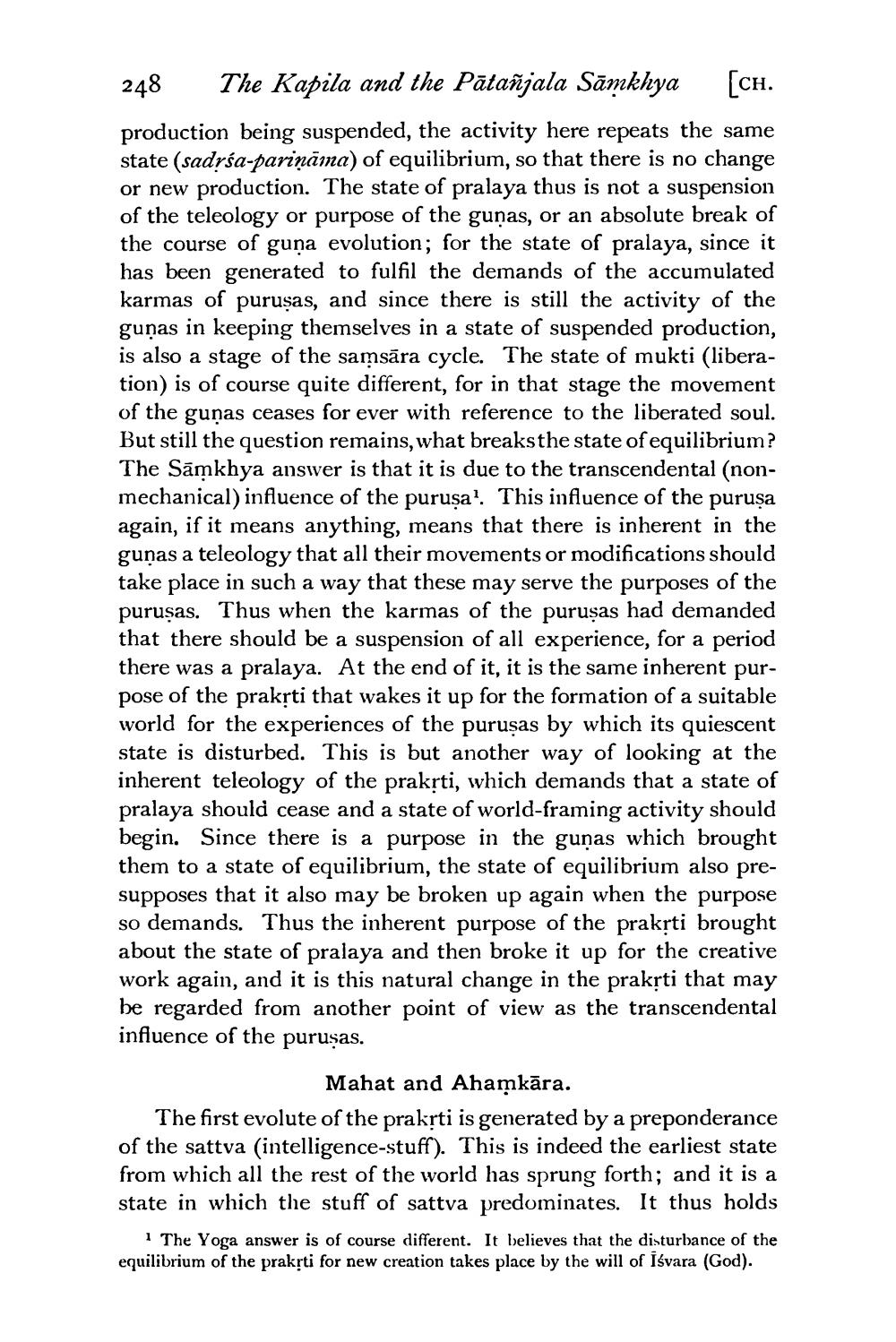________________
248 The Kapila and the Pātañjala Sāmkhya [ch. production being suspended, the activity here repeats the same state (sadrśa-pariņāma) of equilibrium, so that there is no change or new production. The state of pralaya thus is not a suspension of the teleology or purpose of the guņas, or an absolute break of the course of guna evolution; for the state of pralaya, since it has been generated to fulfil the demands of the accumulated karmas of purusas, and since there is still the activity of the guņas in keeping themselves in a state of suspended production, is also a stage of the samsāra cycle. The state of mukti (liberation) is of course quite different, for in that stage the movement of the gunas ceases for ever with reference to the liberated soul But still the question remains, what breaksthe state of equilibrium? The Sāmkhya answer is that it is due to the transcendental (nonmechanical) influence of the purusa? This influence of the purusa again, if it means anything, means that there is inherent in the gunas a teleology that all their movements or modifications should take place in such a way that these may serve the purposes of the purusas. Thus when the karmas of the purusas had demanded that there should be a suspension of all experience, for a period there was a pralaya. At the end of it, it is the same inherent purpose of the prakrti that wakes it up for the formation of a suitable world for the experiences of the purusas by which its quiescent state is disturbed. This is but another way of looking at the inherent teleology of the prakrti, which demands that a state of pralaya should cease and a state of world-framing activity should begin. Since there is a purpose in the gunas which brought them to a state of equilibrium, the state of equilibrium also pre supposes that it also may be broken up again when the purpose so demands. Thus the inherent purpose of the prakrti brought about the state of pralaya and then broke it up for the creative work again, and it is this natural change in the praksti that may be regarded from another point of view as the transcendental influence of the purusas.
Mahat and Ahamkāra. The first evolute of the prakrti is generated by a preponderance of the sattva (intelligence-stuff). This is indeed the earliest state from which all the rest of the world has sprung forth; and it is a state in which the stuff of sattva predominates. It thus holds
The Yoga answer is of course different. It believes that the disturbance of the equilibrium of the prakrti for new creation takes place by the will of īśvara (God).




